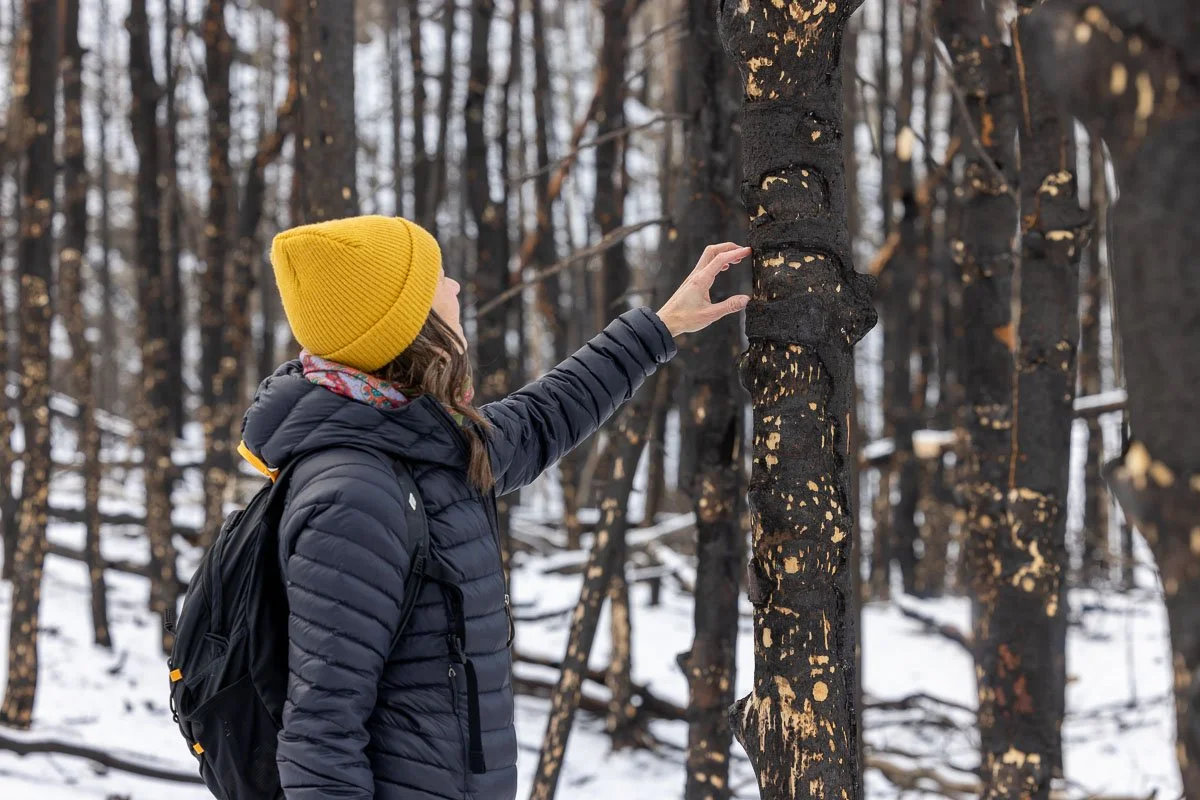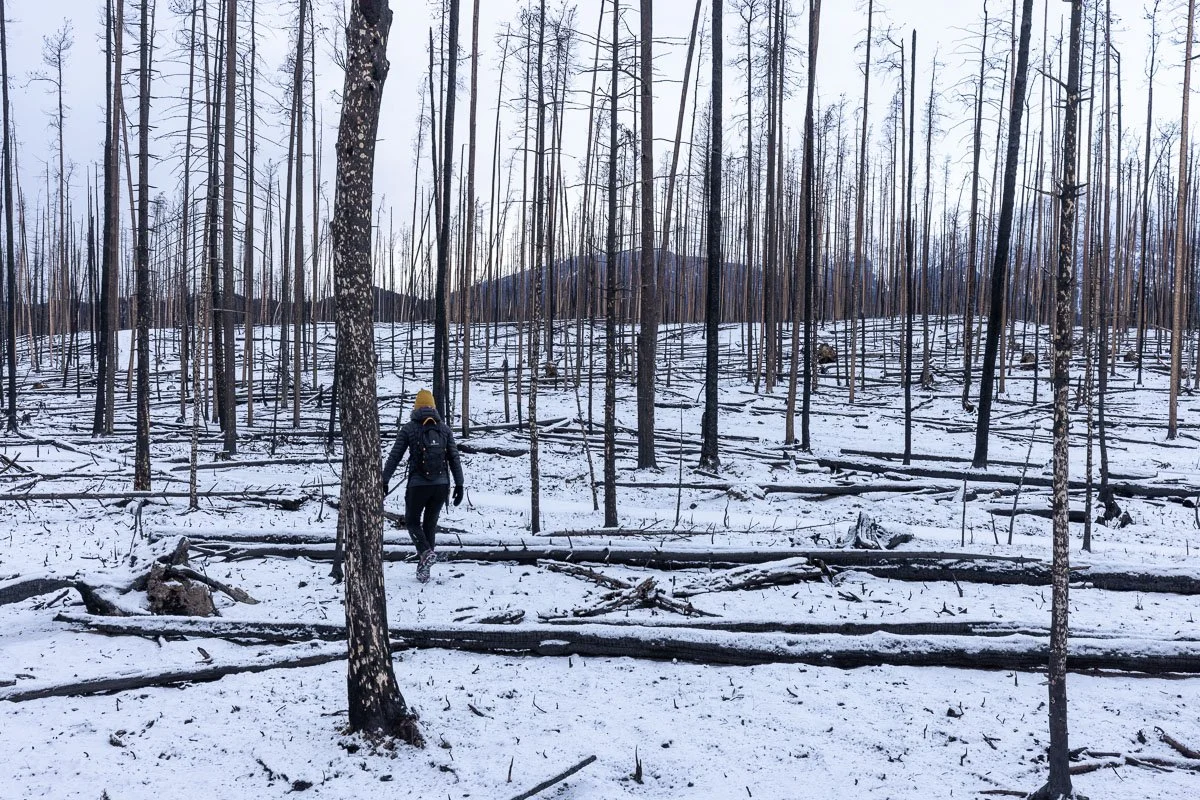Canadian Wildlife Magazine: After Burn
Here on the banks of the Athabasca River in Jasper National Park, the first snow of the season sparkles with November morning sunlight. All around, what were once dark, green-needled conifer trees are now charred skeletons. In the distance, Whistlers Mountain is blinding white, with snow settled into every crevice and gully revealed when fire burned away the mountain’s forested skirt. I’m with James McCormick, a Parks Canada human-wildlife conflict specialist, and Marcia Dewandel,a vegetation restoration specialist with Parks Canada.McCormick is my neighbour. Dewandel and I are members of the same book club. We are all residents of Jasper, Alberta, where, in the third week of July 2024, a wildfire with 30- to 50-metre-high flames ripped through the south valley, eventually setting fire to our town and consuming a third of our friends’ and neighbours’ homes and businesses. Even from our vantage point a couple of kilometres away, we hear the boom of bulldozers crushing concrete and the screech of debris being lifted and dragged from the wreckage as sites are cleared for rebuild. Read more.
Niki amongst the polkadot trees near Old Fort Point, Jasper National Park. Photo: John Marriott.
Mule buck in the burn. Photo: John Marriott.
Winter in the burn near Old Fort Point, Jasper, Alberta. Photo: John Marriott.



